Kubernetes Networking Deep Dive
Network Security
Cert Manager and Lets Encrypt Overview
In this guide, you’ll learn how to use cert-manager and Let’s Encrypt together to automate SSL/TLS certificate management in Kubernetes. We’ll cover:
- What cert-manager is and how to install it.
- An introduction to Let’s Encrypt and its ACME workflow.
- How to integrate cert-manager with Let’s Encrypt for automatic certificate issuance and renewal.
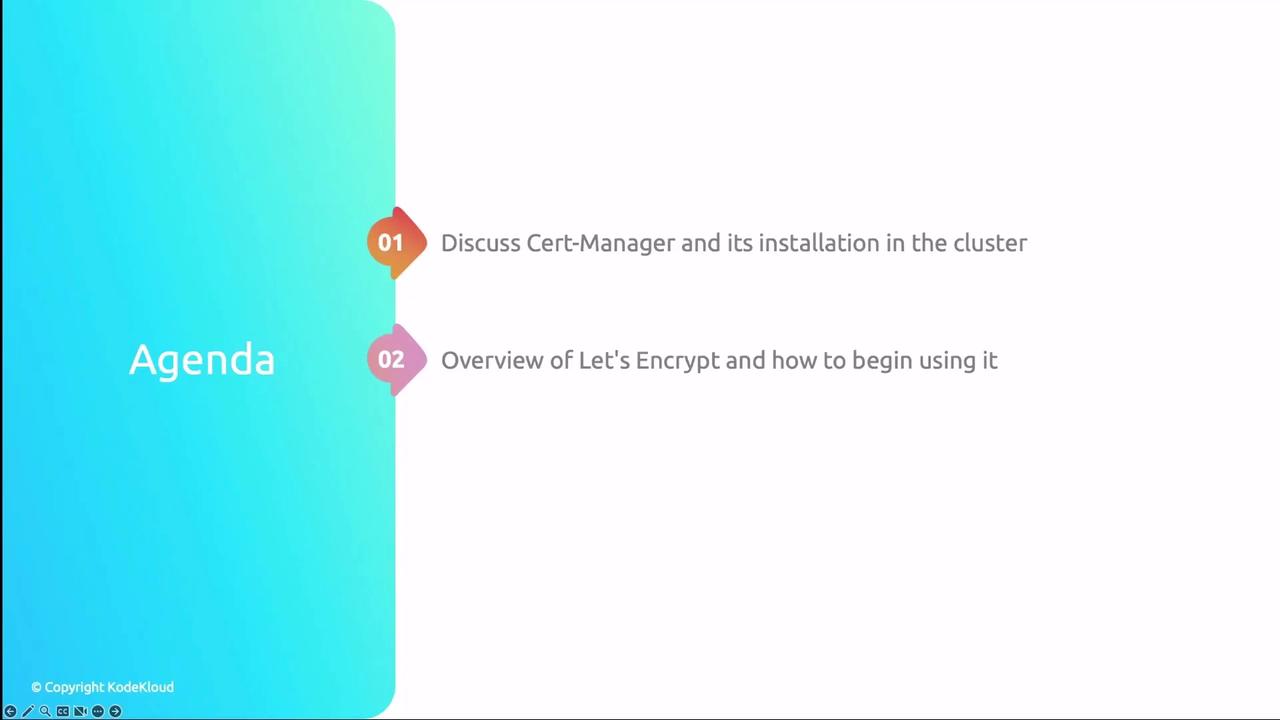
What Is cert-manager?
cert-manager is an open-source Kubernetes add-on that automates the issuance, renewal, and management of TLS certificates. It supports multiple issuers—such as Let’s Encrypt, HashiCorp Vault, and self-signed certificates—and integrates seamlessly with Kubernetes resources like Ingress.
Key features include:
- Automated certificate requests & renewals
- Support for standard, wildcard, and self-signed certificates
- Kubernetes-native CRDs: Issuer, ClusterIssuer, and Certificate
- Secrets storage for TLS key/cert pairs
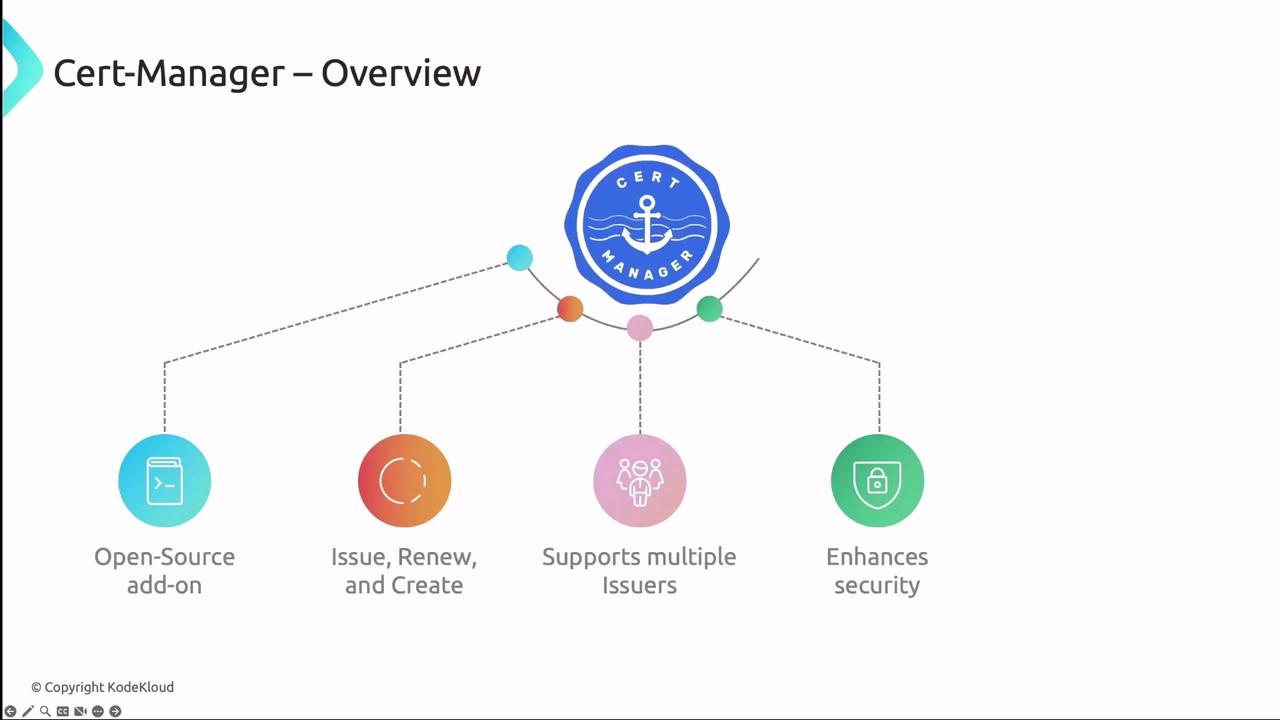
cert-manager Architecture
cert-manager runs as a set of controllers that watch CRDs and reconcile the desired certificate state. Each controller interacts with the Kubernetes API to request, store, and renew certificates.
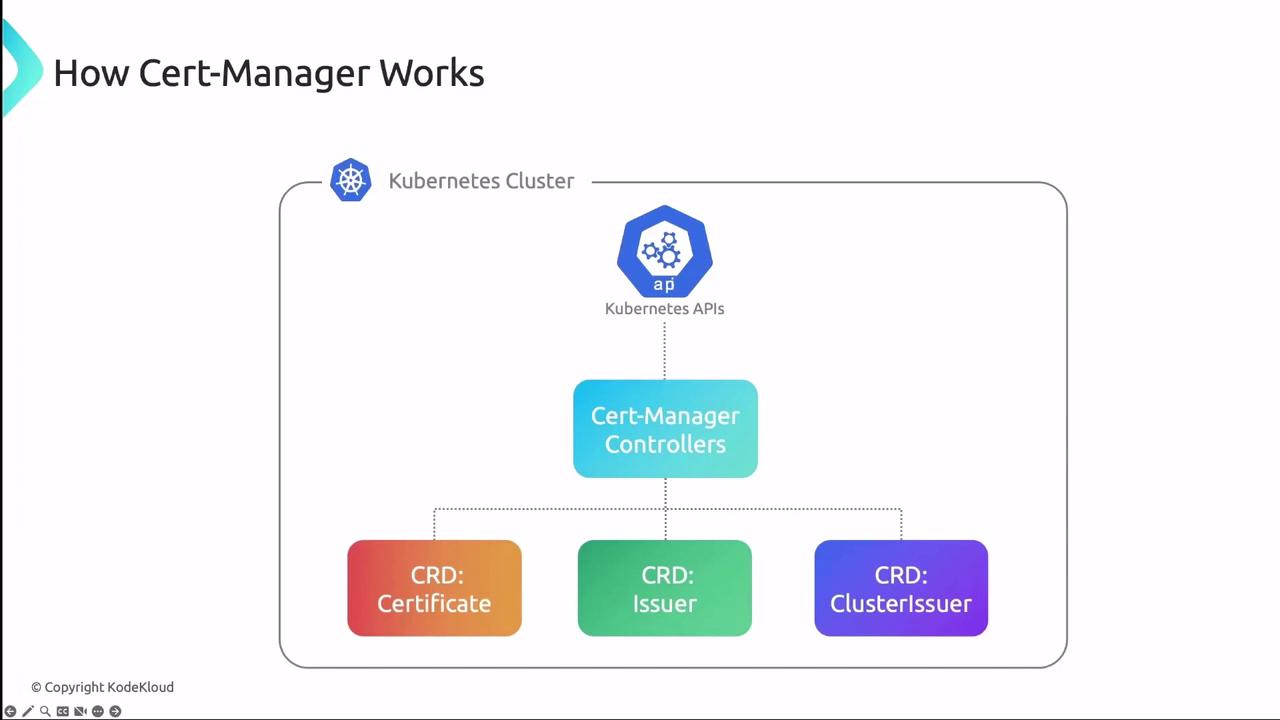
Table: cert-manager CRDs at a Glance
| CRD | Scope | Purpose |
|---|---|---|
| Issuer | Namespaced | Defines how to request certificates within a namespace |
| ClusterIssuer | Cluster | Defines certificate requests at the cluster level |
| Certificate | Namespaced | Specifies desired certificate, secret name, and DNS |
When an Issuer or ClusterIssuer is created, cert-manager requests a certificate from the configured CA, then stores the key and certificate in a Kubernetes Secret. Controllers monitor expiry dates and perform automatic renewals.
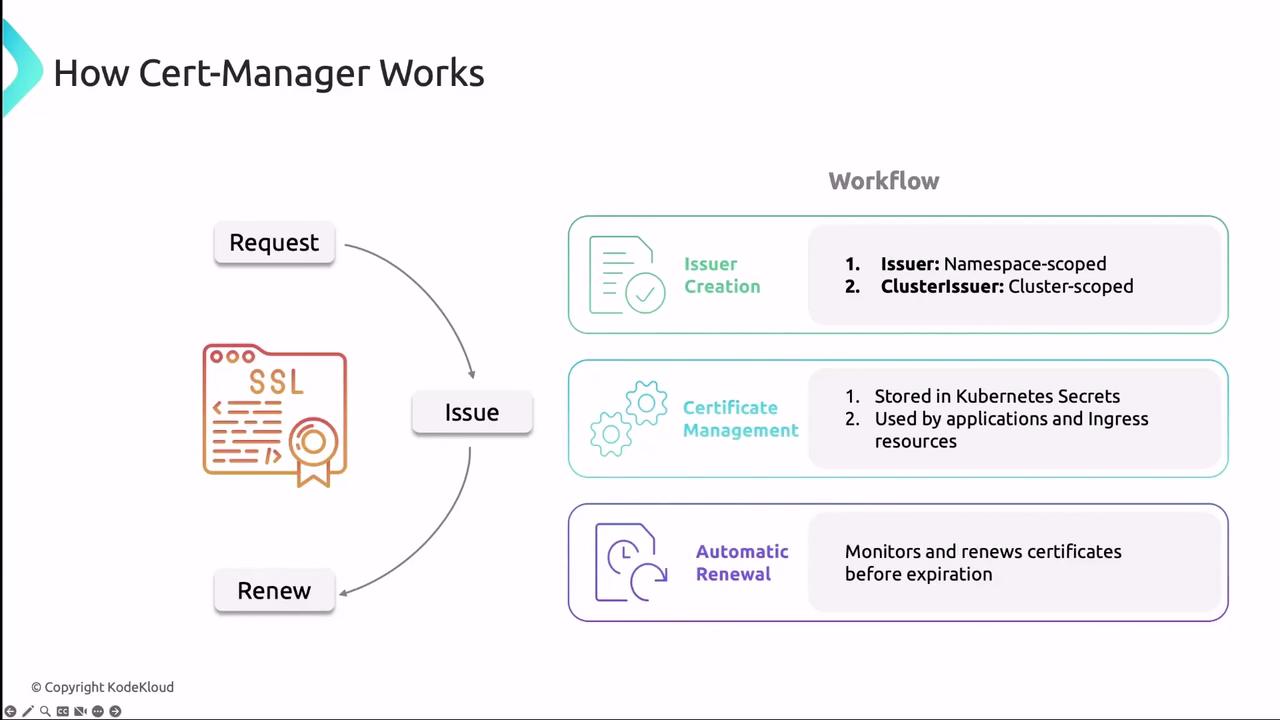
Note
cert-manager can issue both standard and wildcard certificates. Use wildcard certificates to secure multiple subdomains with a single certificate.
Installing cert-manager
The easiest way to install cert-manager and its CRDs is with Helm:
helm repo add jetstack https://charts.jetstack.io
helm repo update
helm install cert-manager jetstack/cert-manager \
--namespace cert-manager \
--create-namespace \
--version <VERSION> \
--set installCRDs=true
Alternatively, install via kubectl:
kubectl apply -f https://github.com/jetstack/cert-manager/releases/download/<VERSION>/cert-manager.yaml
Warning
Always match the <VERSION> placeholder with the latest stable release from the cert-manager GitHub releases.
For diagnostics and manual operations, use cmctl:
# Verify installation
cmctl check api
# Inspect Issuer or Certificate resources
cmctl inspect issuer <name>
# Trigger a certificate renewal
cmctl renew <certificate-name>
Let’s Encrypt Overview
Let’s Encrypt is a free, automated, and open certificate authority (CA) that uses the ACME protocol to issue SSL/TLS certificates. It empowers Kubernetes users to secure applications without manual certificate provisioning.
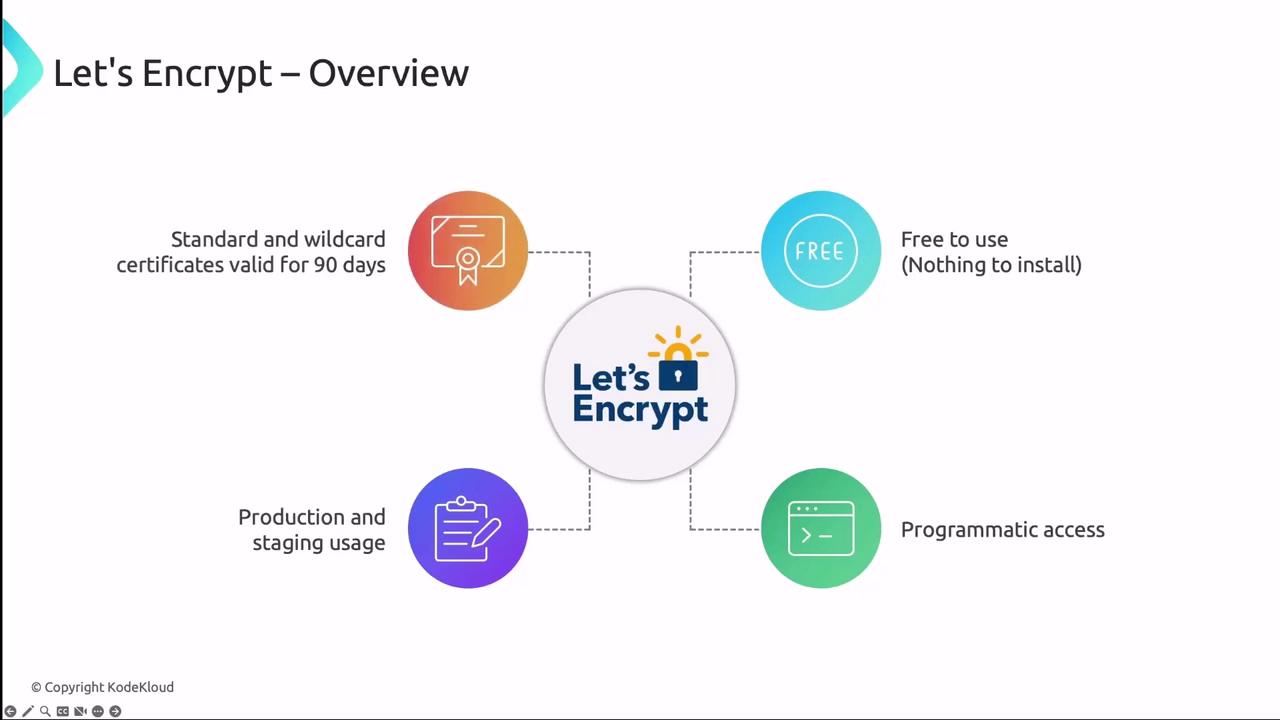
Key points about Let’s Encrypt:
- Certificates are valid for 90 days.
- Offers Production and Staging endpoints.
- ACME challenges: HTTP-01 or DNS-01.
- Publicly logged for transparency.
Table: Let’s Encrypt Endpoints
| Environment | ACME Endpoint | Use Case |
|---|---|---|
| Staging | https://acme-staging-v02.api.letsencrypt.org/directory | Testing automation workflows |
| Production | https://acme-v02.api.letsencrypt.org/directory | Live environments |
The ACME flow:
- Client generates a key pair and creates a
CertificateRequest. - Let’s Encrypt returns an HTTP-01 or DNS-01 challenge.
- Client fulfills the challenge by serving a token or adding a DNS record.
- After validation, Let’s Encrypt issues the certificate.
- Client fetches and stores the certificate in Kubernetes.
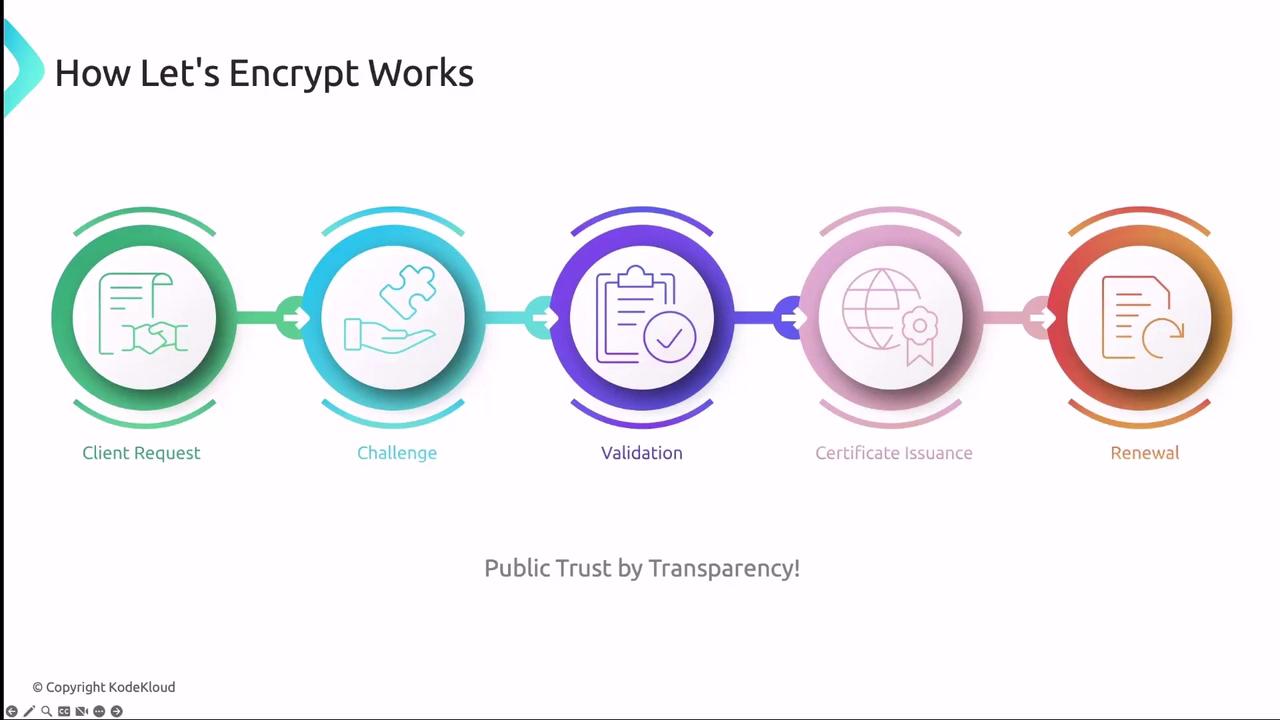
Integrating cert-manager with Let’s Encrypt
To use Let’s Encrypt as your certificate authority, define an Issuer or ClusterIssuer in cert-manager:
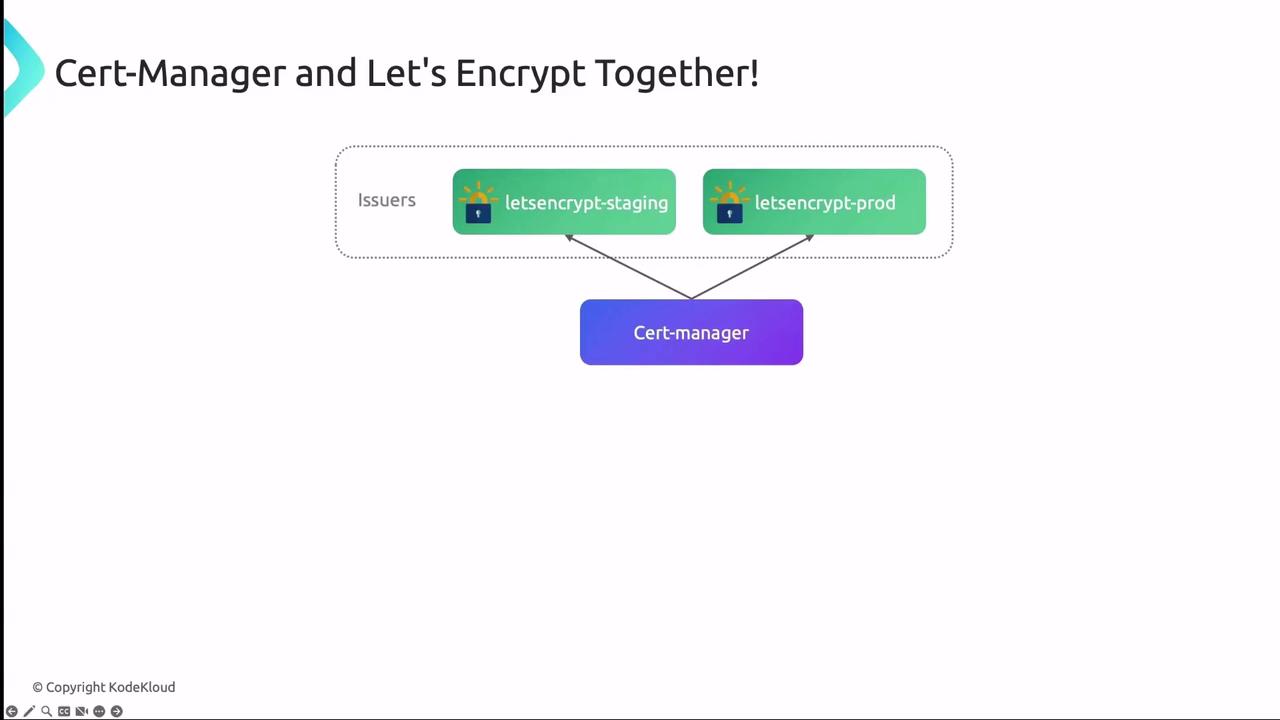
Example: Staging Issuer
apiVersion: cert-manager.io/v1
kind: Issuer
metadata:
name: letsencrypt-staging
spec:
acme:
server: https://acme-staging-v02.api.letsencrypt.org/directory
email: [email protected]
privateKeySecretRef:
name: letsencrypt-staging
solvers:
- http01:
ingress:
class: nginx
Note
When moving to production, update the server URL to the production ACME endpoint and rename secrets accordingly.
Configuring Kubernetes Ingress
Annotate your Ingress resource to reference the Issuer and specify TLS settings:
apiVersion: networking.k8s.io/v1
kind: Ingress
metadata:
name: web-ingress
annotations:
cert-manager.io/issuer: letsencrypt-staging
spec:
tls:
- hosts:
- example.com
secretName: web-tls
rules:
- host: example.com
http:
paths:
- path: /
pathType: Prefix
backend:
service:
name: web
port:
number: 80
When this Ingress is applied, cert-manager handles ACME challenges, retrieves the certificate, and stores it in the web-tls Secret. Certificates are renewed automatically before expiration.
Links and References
Watch Video
Watch video content